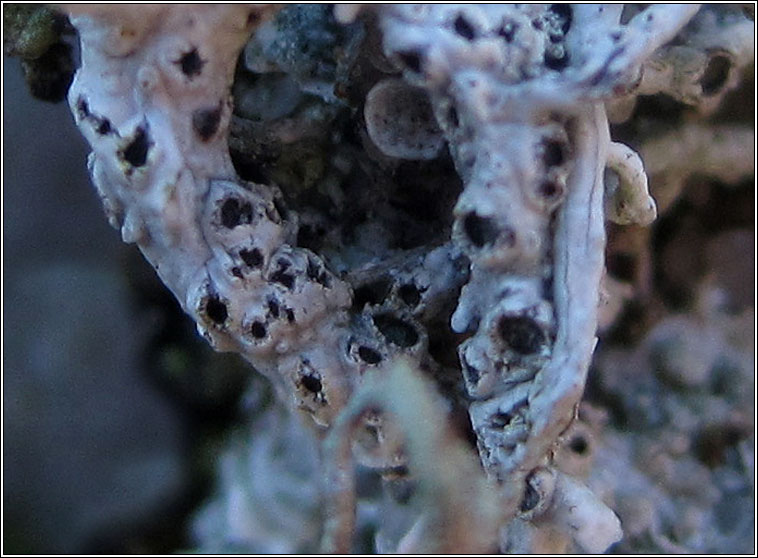
I have been sent a very interesting query from a correspondent who found this lichen on a fragment of ironstone lying on the ground. This thread will illustrate the value of recording what you observe, even if you can't name the lichen. 

My correspondent assigned a provisional genus - Lecania. I think it belongs in a different genus but it is useful to make an initial hypothesis and then to keep an open mind. 

Perhaps my correspondent was led astray by a misinterpretation of the spores as being septate. Spores in fresh material are difficult to interpret without 'clearing' and while iodine is a useful stain (used here), it is not harsh enough on its own to clear spores. 

Perhaps these spores would appear simple if they were mounted in nitric acid, or just mounted in water and heated over e.g. a tea light candle flame. 

My correspondent noticed and documented a feature displayed by some of the apothecia, which a less enquiring observer would not have considered worth noting. 

Here is one of the micrographs my correspondent sent, a section through one of the apothecia, which appears to be developing a new exciple within the old apothecium. 

The habitat and appearance strongly suggest the genus Trapelia to me. A C+ red reaction and presence of Chlorella type photobiont (binary fission) would help to confirm the genus. 

I would never have known about the regeneration of apothecia in some species of Trapelia if it weren't for recent work by Alan Orange. He described T. collaris as new to science in 2018, naming it after the collar of old tissue surrounding the newly initiated structure inside. 

The new Trapelia key uses this trait as one of the characters.
britishlichensociety.org.uk/sites/www.brit…
britishlichensociety.org.uk/sites/www.brit…

I can't provide a definite id. for my correspondent. The recent taxonomic work has refined the concepts but muddied the waters for field recorders and amateurs without access to molecular methods. 

I haven't got my head fully around the new concepts, and regenerating apothecia are not diagnostic for T. collaris, just particularly common in that species. It is quite possible that my correspondent has found this recently described species but I can't confirm.
Despite the frustration for both of us about not having a definite name, I am always heartened when I received such well observed queries which frequently lead to important discoveries (eventually).
The reported size of the spores is well below the range for the likely Trapelia candidates. I will check with my correspondent about calibration. If they really are small, perhaps abnormally small. I don't place too much weight on spore size in most cases, using many other...
...characters in addition to simple spore size (having experience of how variable spore size can be even in a single specimen).
• • •
Missing some Tweet in this thread? You can try to
force a refresh






















